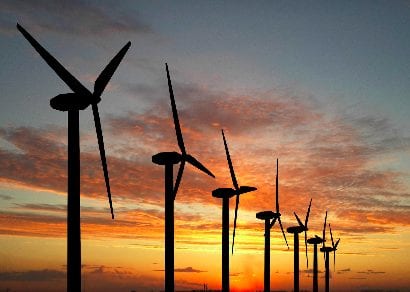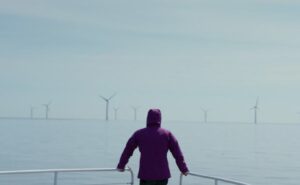Tony Abbott has made his first comments on wind energy and the Renewable Energy Target as Prime Minister. During an interview with Alan Jones (2GB) PM Abbott had the following to say:
“If you drive down the Federal Highway from Goulburn to Canberra and you look at Lake George, yes there’s an absolute forest of these things on the other side of the lake near Bungendore. I absolutely understand why people are anxious about these things that are sprouting like mushrooms all over the fields of our country. I absolutely understand the concerns that people have.
“And I also understand the difficulty because while renewable power is a very good idea at one level, you’ve gotta have backups because when the wind doesn’t blow and the sun doesn’t shine, the power doesn’t flow. So this is an obvious problem with renewable energy in the absence of much more sophisticated battery technology than we have right now.
“We are going to review the Renewable Energy Targets. There was going to be a review anyway next year. We’re taking this review very seriously and one of the things that we’ll be looking at will be the impact of renewable energy on power prices, because not only is the carbon tax adding about 9 per cent to everyone’s power bills and we’re going to get rid of that as quickly as we can, renewable energy targets are also significantly driving up power prices right now.”
The Prime Minister cites two common misperceptions about renewables energy: Firstly, that renewables aren’t up for the job of powering the Australian economy because they’re intermittent. And secondly, that the Renewable Energy Target makes up a significant portion of electricity bills.
Let’s break down these misconceptions for the Prime Minister to assist his government’s energy policy making.
Misconception #1: Australia needs backup for when the wind doesn’t blow and the sun doesn’t shine.
Reality: It is technically feasible for Australia to meet it’s electricity needs from renewable energy alone.
According to the energy experts, shifting to 100 percent renewable energy is both technically viable and affordable. Studies by the think tank Beyond Zero Emissions (PDF), and follow up studies from the Australian Energy Market Operator (PDF) and University of New South Wales (PDF) confirm the technical feasibility of renewable energy. In terms of cost, the 100 percent renewable energy system ischeaper the fossil fuel based business-as-usual approach.
Modelling is one thing, what about real world applications?
South Australia is leading the nation with it’s renewable energy rollout. The state now meets 31 percent of it’s electricity demand from renewable energy sources. Wind farms are doing the heavy lifting, providing 27 percent, while the rapidly growing rooftop solar contributes 4 percent. South Australia is expected to reach 50 percent renewables in a decade.
Misconception #2: Renewable energy is a significant part of power bills, driving up costs.
Reality: John Howard’s Renewable Energy Target makes up a small portion of Australian power bills. The rollout of renewable energy is making power bills cheaper.
Data from the Australian Energy Market Commission (PDF) shows the RET accounts for less than one percent of the average household electricity bill – or a mere $35 from a $2000 bill. That’s around $0.70 each week over a year. It is transmission, distribution, and wholesale electricity prices which are the largest contributors to power bills.

The Australian Energy Market Commission shows transmission, distribution, and wholesale electricity prices are the largest contributors to power bills.
Renewable energy is putting downward pressure on power bills. Energy analysts agree wind farms are causing South Australia’s wholesale electricity prices to drop. This trend resulted in the SA Essential Services Commission directing energy companies to cut retail prices cut by 8.1 percent. The move will lower the average power bill by $160 a year.
So, what are Australians getting for their $35 investment in renewable energy? Cheaper bills, less pollution, and action on climate change. Most Australians would agree that’s a win, win.
Liberals can lead on renewable energy…
Prime Minister Tony Abbott can take leadership on renewable energy. The PM can back John Howard’s Renewable Energy Target, deliver more renewable energy and cheaper power bills for Australians.
Retired Liberal Sentaor Peter Rae is a renewable energy expert.
Retired Liberal Senator for Tasmania, Peter Rae shows you can be a proud Liberal and a strong supporter of renewable energy. Mr Rae believes the Liberal party has a tradition to uphold when it comes to supporting renewable energy.
Mr Rae was vice president of the World Wind Energy Association (now honorary VP) and is Vice Chairman of the International Renewable Energy Alliance, REN21. With impeccable renewable energy credentials, Mr Rae knows what he’s talking about. Perhaps the PM will draw on the expertise of Peter Rae when undertaking a review of the Renewable Energy Target next year.
Leigh Ewbank is Yes 2 Renewables community coordinator.









